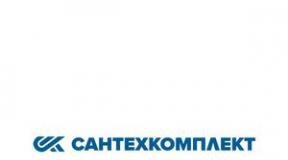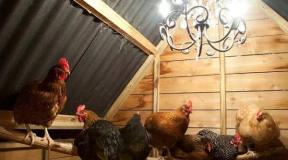Teaching native speech and language in the classroom. The educational system of teaching the native language of the Lipovan Russians living in romania
Ichkeeva V. Yu.
MBOU "Adykovskaya secondary school" them. G.B.Mergulchieva, Chernozemelsky District of the Republic of Kalmykia, teacher of primary (national) classes
Features of teaching the native language in primary school.
"As long as the language of the people is alive
in the children of the people, until then the people live ...
The language died out in the children of the people - and the people died out too.
K. Ushinsky
The native language is a means of mastering knowledge, studying all academic disciplines in school and further education. Research by domestic psychologists and psycholinguists has proven that mastering speech rebuilds his entire psyche, all the activities of students. According to Ya.S. Vygotsky, “there are all the factual and theoretical grounds to assert that not only the intellectual development of a child, but also the formation of his character, emotions and personality as a whole is directly dependent on speech”.
Teaching the native language helps to solve the problems of moral education. The child learns through language the norms of morality, moral attitudes, which, with purposeful upbringing, become the standards of his own behavior, attitude to the world around him, to himself. Language as an element of culture is the fundamental basis of the educational process. By appropriating the social experience of previous generations, the child learns the language as part of the national culture. "Forming speech skills in our native language, we simultaneously educate an aesthetic attitude to nature, man, society, art. The native language itself, as an object of assimilation, has the features of the beautiful, is capable of causing aesthetic experiences."
Today the problem of the Kalmyk language is the most painful one. We all know that our mother tongue is in a state of extinction. And it is the duty of each of us, speakers of the Kalmyk language, to preserve it, to speak our native language, thereby creating a linguistic environment in society. Everyone in his place must do everything possible to preserve the language. And first of all, it is necessary to teach the native language to the younger generation. And in this the role of the primary school teacher is key. The teacher is not a transmitter of knowledge and information, but an organizer of the learning process, cooperating with the student. He does not go to the children with his subject, he goes to the subject together with his students, i.e. to the language. The teacher of the national class is a person who gives the student the means of understanding the whole picture of the world, i.e. he is the teacher of life. The student in this process is not an object that is influenced, but an actively acting participant who does not work under compulsion, but as a result of the conditions created by the teacher, is himself included in the process of cognition.
Having worked in national classes for ten years, and having seen the fruits of your labor, you come to the understanding that with the use of various forms and methods of teaching, through systematic language exercises, through games and the study of elements of oral folk art, you can teach children to speak their native language. After the first year of study in the national class, it is clear that students are actively mastering a certain vocabulary, knowledge of oral folk art and song and dance folklore. Armed with knowledge, skills and abilities, one must strive to formulate a conscious attitude towards learning, develop cognitive interest and love for the native language. For these purposes, in the lessons, extensive ethnographic material is widely used, which enriches the world outlook of children, acquainting them with the ancient customs and traditions of the Kalmyks. In each lesson, great attention is paid to conversational speech - speaking the Kalmyk language, offering sample samples of tasks and exercises of a creative nature for individual, group performance and homework (for example: make sentences based on a picture, compose a story on a given topic, come up with a dialogue, etc.).
Education in the national class does not particularly affect the mastery of the norms of the Russian language. Along with their native language, fourth-year students are good at writing dictations, statements and essays on a given topic, they know and are able to apply all the studied spelling when writing. Reading, both in their native language and in Russian, by students of the national school meets the requirements of the program. Children master, in the main, correct fluent reading, are able to convey what they have read by retelling and highlight main idea text.
The main indicator of the education of students of the national class is the development of their native speech. The development of speech is achieved through the study of the elements of CNT. Experience shows that graduates of the national primary school they know from 80 to 120 CNT elements, in addition, up to 40 names of birds, plants, etc., and this all influenced the development of dialogical and monologue speech.
Folk wisdom of fairy tales, proverbs, sayings, riddles, produces a strong emotional impact on the personality of the child, carried out by the power of the native language, the beauty of the native nature. With their content, proverbs, sayings, fairy tales affect the consciousness, the emotional sphere of children, thereby contributing to the transformation of knowledge into stable socially positive personality traits, determine its attitude to the surrounding reality.
One of the main activities of junior schoolchildren is play activity. It is play during this period that serves as a means of forming and developing many useful personal qualities in a child. Kalmyk folk games are associated with work, everyday life, reflect the customs, customs of Kalmyks, develop ingenuity, resourcefulness, ingenuity. Students of the national class get acquainted with the Kalmyk folk games (Shahand naadl hn, b ɵ to b ǝ rld ǝ n, n ǝ ph shinҗ), learn the rules of the game.
Familiarization of children with oral folk art helps to learn more deeply, more fully the surrounding reality, enriches the speech of children with figurative words and phrases. The Kalmyk epic "Dzhangar" contains valuable educational ideas. Students of the national class become familiar with the epic, read it, memorize and stage passages. Students prepare costumes, come up with decorations, masks, and learn a heroic dance. Such work allows children to more deeply assimilate the experience and traditions of the people, to better understand its moral principles.
Primary school acts as the first stage at which the foundations of communicative competence are laid and begin to develop, allowing communication in the native language and interaction of children. Communicative competence is the ability to carry out speech activity by means of the target language in accordance with the goals and situation of communication within the framework of a particular field of activity. It is based on a set of skills that allow you to participate in verbal communication in its productive and receptive forms.
Communication skills by type of speech activity:
In the area of \u200b\u200bspeaking:
Dialogue form
Be able to lead:
Etiquette dialogues in typical situations of everyday, educational-labor and intercultural communication, including those obtained using communication means;
Dialogue - inquiry (request for information and response to it);
Dialogue is a motivation for action.
2. Monologue form:
Be able to use:
The main communicative types of speech: description, story, characterization (characters).
In the field of listening
Listen and understand:
The speech of the teacher and classmates in the process of communication in the lesson and verbally / non-verbally respond to what he heard;
Small accessible texts in audio recordings, built mainly on the studied language material, including those obtained using communication means.
In the reading area
Aloud small texts based on the studied language material;
To myself and to understand texts containing both the studied language material and separate new words, to find the necessary information in the text (the names of the characters, where the action takes place, etc.)
In the field of writing
Own:
Ability to write words, phrases and sentences from the text;
The basics of writing: write a congratulations on the holiday, a short personal letter.
Characteristics of the main activities of students:
Asking questions about anything; answer the questions of the interlocutor;
Ask about something;
Ask for something and respond to the request of the interlocutor;
Start, maintain and end a conversation;
Describe anything;
To communicate something;
Tell by expressing your attitude;
Describe, naming the qualities of a person / object;
Play by heart the texts of rhymes, poems, songs;
Retell the heard / read text (on supports, without supports);
Compose your own text by analogy.
In direct communication
To understand the whole speech of the teacher during the lesson;
Recognize by ear and understand a coherent statement of a teacher, classmate, built on familiar material and / or containing some unfamiliar words.
Use a re-ask or a request to repeat to clarify individual details;
Verbally or non-verbally respond to what you hear;
When communicating indirectly (based on audio text)
Perceive and understand the basic information contained in the text (who, what is it about, where it happens, etc.);
Correlate the graphic image of a word with its sound image based on knowledge of the basic rules of reading;
Follow correct stress in words and phrases, intonation in general;
Predict the content of the text based on the title;
To perceive the text visually, to recognize familiar words, grammatical phenomena, to fully understand the content;
Guess the meaning of unfamiliar words by the similarity with the Russian language, by the context;
Find the meaning of individual unfamiliar words in a bilingual textbook dictionary;
Younger schoolchildren master the following special (subject) educational skills and abilities:
Enjoy reference materialpresented in the form of tables, diagrams, rules;
Maintain a dictionary (dictionary notebook);
Organize words, for example by topic
In the process of learning their native language, younger students:
They improve the methods of working with the text, relying on the skills acquired in the lessons of the native language (predicting the content of the text by its title, the figures given to the text, copying the text, writing out individual words and sentences from the text, etc.);
They master more varied methods of disclosing the meaning of a word, using word-formation elements; synonyms, antonyms, context;
They improve general speech communication skills, for example: start and end a conversation using speech cliches; keep the conversation going by asking questions and asking again;
Learn to exercise self-esteem, self-control;
Learn to independently complete tasks using a computer (if there is a multimedia application).
The use of computer technology in educational activities is one of the effective ways increasing motivation and individualization of learning.Knowledge comes only to an interested person. It is not for nothing that folk wisdom says: "The one who wants to do more than the one who can."
The use of ICT helps an elementary school teacher move from an explanatory-illustrative teaching method to a personal-activity method, in which the child becomes an active subject of educational and cognitive activity, and also allows you to combine play and educational activities.
Havejunior student involuntary attention is better developed, which becomes especially concentrated when he is interested, the educational material is clear, bright, evokes positive emotions in the student.
Correct effective use of a computer in a lesson is a solid assimilation of knowledge by students, the development of independence, activity and self-esteem skills in them.
Pon subjects of federal competence there are various computer programs: training, information and reference, demonstration, control other. In this regard, native language teacherswe have to create ourselvessince there are no ready-made materials forlessons.
Tables, graph-schemes, matrices, supporting notes, tests, crosswords - this is a far from complete list of didactic materials that can be created on a computer. Tables created in the presentation suggesttsya pupils in the formvisual and didactic material -cot and (Attachment 1)... Thus, the impact on the student's consciousness is not limited only to viewing the presentation, but already familiar visual images and content create a cognitive environment in the office.Presentations (appendix 2,3) contribute to the best memorizationteaching material taught in the lesson... A visual presentation of material about folk customs and traditions enables children to more vividly imagine a particular rite, remember its important points, and systematize them.
Matrices and graph schemes (appendix 4.5), developed on the basis of P.M. Erdniev's UDE, are especially effective in the lessons of the native language. Graph-schemes contribute to the replenishment and build-up of vocabulary among students, but the execution of the next exercise can be a continuation of the previous one. Performing this exercise (Appendix 6), the student relies on the previously acquired knowledge, uses the learned vocabulary and makes sentences without difficulty, supplementing them with the necessary words. Upon completion of this task, a coherent text is obtained that the student needs to read, headline, break into logically connected parts, draw up a plan and retell the content of the text based on it. This consistent presentation makes it easier for the student to master the language and develop spoken language.
Hwhat does society expect from the school? The answer is seemingly simple: quality education. How should a native language teacher perform this task? whatdoes quality education mean?
Resultlabor mother tongue teachers Is a person with a unique personality, who knows his roots, a conductor of his national cultural heritagediya in the family and society. If a the student speaks his native language, sings Kalmyk songs, dances Kalmyk dances, knows how to rejoice and how to behave in moments of sadness and sorrow,as a Kalmyk, it means that the teacher did it with its main task, which means is he on a right way.
Attachment 1
Appendix 2

Appendix 3
Appendix 4
Appendix 5
Appendix 6
Literature:
1. "In the methodical piggy bank of the teacher of the native language" part 1.2 / MO RK Center for Upbringing and Education. - Elista - 2005.
2. What does it mean to know the language and own it / Ed. N.M. Shansky. M., 1990.
3. How to revive the national school. Steps of the Republic of Sakha (Yakutia): Articles and materials. M .: Education, 1994.
4. Volkov G.N., Petrova T.N., Pankin A.B .. Introduction to ethnopedagogy: / Textbook. A manual for students of higher educational institutions / Under the scientific editorship of G.M. Borlikov. - M .: OOO "Big Dipper". Elista: Kalm State University, 2006.
5.Mukaev O.D. The wisdom and spirituality of folk pedagogy. Elista: Jangar, 1995.
From the editor:
More than one hundred thousand Russian Lipovans (Old Believers) live on the territory of Romania. Therefore, the general educational system of teaching the native Russian language and Russian culture of Russian-Lipovan children in a Romanian-language school, developed by the Community of Russian-Lipovans, is very important. At the International Association of Teachers of Russian Language and Literature (MAPRYAL), which took place in October 2013 in Bucharest, Professor F. Chirila made a very interesting report on this topic. The author has provided the text of the report specifically for our site.
About the author. Professor F. Chirila is one of the founders of the Community of Russian-Lipovans in Romania. Author of over 300 articles and studies on comparative linguistics, dialectology, ethnology, history and culture of Russia, as well as on the history and culture of Russian-Lipovans (Old Believers), teaching methods foreign languagespublished in Romanian and foreign magazines in the specialty. He has published 32 books, one and in co-authorship, most of which are devoted to Russian culture. Author of textbooks, dictionaries and other textbooks on the Russian language and Russian culture for students of the philological profile.
The creator modern system teaching the native language of Russian Lipovan children in Romania. The author of the first Primer for Russian Lipovan children, as well as the author (and co-author) of textbooks on the Russian language and Russian culture for Russian-Lipovan students of elementary schools, gymnasiums and lyceums, which are a kind of encyclopedias of Russian culture. The appearance of these textbooks is a historical event, since until now the Lipovan Russians did not have their own textbooks, according to which they would study their native Russian language and the culture of Russia, their historical homeland.
***
More than one hundred thousand Russian-Lipovans (Russian Old Believers) in 70 rural-type villages. To these rural Lipovan villages, one should also add a number of cities in which entire neighborhoods are inhabited by Russian-Lipovans: Bucharest, Tulcea, Constanta, Braila, Galati, Iasi, Suceava, Botosaniand others. They are located mainly along the north- and southeastern territory of Romania ( in Bukovina, Moldova, Dobrudja and Muntenia (Wallachia). The Lipovan Russians, like the entire Russian Old Believer diaspora, still preserve the treasures of ancient Russian spiritual and material culture, the culture that was formed in a rather long period, starting with the formation of Kievan Rus (during Grand Duke Vladimir) and before the era of Peter the Great.
For more than three hundred centuries, the Lipovani Russians have lived and worked in the new, Romanian territory in full harmony with the predominant Romanian population, as well as with other ethnic groups, sharing their joys and sorrows. However, the ruling circles who were in power at different times in every possible way and not unsuccessfully tried to keep the Lipovan Russians away from social progress, to prevent their representation in the central and local authorities and administration, and to prevent them from education.
The revolutionary changes taking place in Romania in December 1989 finally made it possible for the Lipovan Russians to participate in public and political life. Immediately after the victory of the revolution, all Lipovani Russians united in a socially ethnic organization - The Russian Lipovan community... The Lipovan Russian community is a legally independent ethnic community of a socio-cultural nature, which actively protects not only their collective and individual rights and freedoms of the Lipovan Russians, but at the same time stimulates the revival, dissemination and preservation of their national Russian traditions, customs and rituals. ; it also helps to improve the quality of teaching the native Russian language in schools where children of Russian-Lipovans study. It is pertinent to note here that the Russian-Lipovan community of Romania in the formation of the young generation adheres to the traditional concept, according to which the function of the teacher should be performed by the traditional triad: family-school-church.
Since 1990, Russian Lipovan community has a representative in the Romanian Parliament. The Lipovan Russian community, like other national minorities, receives financial support from the Romanian state . It is also pertinent to emphasize that the right to learn their native language and native culture for all 18 ethnic groups living on the territory of Romania is fully guaranteed. The Romanian Constitution, and Education Law. Thus, teaching the native Russian language and Russian culture is fully included in the Romanian public education system.
It should be noted that the peculiarity of the evolution of the Russian dialectal speech of the Lipovan Russians in a completely different linguistic environment contributed to a very noticeable discrepancy between the stream of the Lipovans and the modern Russian literary language. In addition, the process of assimilation and denationalization of Russian-Lipovans until 1989 was very strong, and Romanian speech began to be heard more and more often in Lipovan families. Our young generation began to forget their native language. Therefore, the general education system of teaching the native Russian language and Russian culture of Russian-Lipovan children in a Romanian-speaking school, developed by the Community of Russian-Lipovans in 1990, aims to preserve the native Russian language as a guarantee of mastering the native Russian culture and at the same time as a means preservation our national-Russian identity... All this is based on both “family” and national motivations. The fact is that our students are mostly bilingual. Parents would like to develop and maintain their children's knowledge of the Russian language and Russian culture for communication both in the family and with their compatriot in Russia. In addition, for our young people there is also a desire to learn their native Russian language and Russian culture at school and for the sake of potential career opportunities. Both of these motivations have been successfully working with us for over 20 years. This path was followed by the Community of Russian-Lipovans in Romania, which did not consolidate Russian schools, but made them bilingual. So, all the activities of the Community of Russian-Lipovans are aimed at striving to preserve their national identity, that is, to preserve their involvement in the general Romanian socio-cultural context and at the same time not to break with the origins of their national Russian culture.
For this purpose, the so-called schools with ethnocultural component content of education. The main distinguishing feature of educational institutions of this type is the content of education, in which, in addition to the basic general educational program of a school with instruction in Romanian, all the richness of the national-Russian culture, the way of life of the Lipovans, their traditions, social norms of behavior, spiritual values. This general education system has a bilingual aspect, which allows children of Russian-Lipovans to receive a second education in their native Russian, taking into account their bilingual characteristics. Thus, children of Russian-Lipovans learn not only their native Russian language as such, but also their native culture and language as an aspect. of this culture, and necessarily in comparison with the language and culture of the country of residence, taking into account the influence of the Romanian language on their native Russian language. For such schools, we have developed a version of the basic curriculum, and on its basis the corresponding special curricula of different levels were developed, which were approved by the Ministry of Education of Romania.
The idea of \u200b\u200bethnocultural education has been embodied in our country in different forms. it preschool bilingualinstitutions (kindergartens), primary schools, gymnasiums, where work in the ethnocultural direction is carried out in both junior and senior classes, this is lyceumswhere groups of intensive teaching of the native Russian language and native culture operate, as well as group optional teaching of the native language and native culture in the local communities of Russian-Lipovans.
The concept of our general education system of teaching the native language and native culture in the Romanian-speaking school is based on the idea that teaching the native language cannot be conducted in isolation from the culture of Russia, our historical homeland, and in isolation from our Russian Old Believer culture. , meaning that each language contains a portrait of the national culture. It is possible to cognize, understand and accept it only through a linguistic image. If the native language (in our case russian) is mastered more successfully under the condition of a higher level of proficiency in the Romanian language, it is logical to assume that entering the world of native Russian culture can greatly contribute to the development of the personality of our student as a subject of native culture. In our case culture is learned through language and language through culture. The point is not only (and not so much) that, mastering the native Russian literary language, our student better understands the features of another language and culture, deeper realizes the ways of expressing thoughts in Romanian, which contributes to the expansion of his philological horizons. In this case, it should be recognized that the native language as an academic subject for Lipovan Russians is unique in its educational capabilities. As a matter of fact, it is not an academic subject, but an educational discipline that has enormous potential, capable of making a significant contribution to the development of a person as an individual. IN this case The native language, like any foreign language, performs two important functions: knowledge and communication.
It should be noted that the Russian Lipovan community of Romania in the formation of the young generation adheres to the traditional concept, according to which teacher function the traditional triad should do: family-school-church.
The basis of our general education system of teaching the native Russian language and the native Russian culture of Russian-Lipovan students in the Romanian-language school includes two programs: normative and in-depth... The implementation of these programs fully satisfies, in our opinion, the needs of each member of the Russian-Lipovan community individually and of the Romanian society as a whole.

According to the existing curricula in a school with an ethnocultural component, teaching the native language and native culture according to the normative curriculum begins from the 2nd grade of primary school and continues until the 12th grade inclusive. The total number of weekly hours: in grades II-IV - 4 hours, in grades V-XII - 3 hours, additional training is added to them religions(by history of the Russian ancient Orthodox Church) in the native language in II-XII - 1 hour, and in the VI-VII grades - teaching in the native language history and traditions of Russians-Lipovans - 1 hour plus training music (aesthetic education) - 1 hour. Our system foresees to continue obligatoryteaching native Russian language and native culture up to grade X inclusive. In the XI-XII grades, mastering the native language and native culture continues for optional basis depending on the profile of the lyceum. To meet the interests of students and social needs of society in the XI-XII grades are offered a choice electives: teaching oral communication in the native language, teaching reading and translation of humanitarian or scientific and technical literature. Students who, for any reason, cannot attend electives at the lyceum, but want to continue studying their native language and native culture, can study this language and culture intensively in active groups with local communities of Russian-Lipovans or independently using a self-instruction manual specially compiled us, as an optional option. In addition, since the fall of 1992, at the insistence of the Community of Russian-Lipovans in Romania, the Ministry of Education has established classes of a lyceum with a bilingual pedagogical profile. Graduates of these classes, educators and teachers, work in our schools with an ethnocultural component of education. In addition, since 2004, the city of Iasi operates class of confessional Russian ancient Orthodox school... Today, more than two thousand Russian Lipovan students study in our schools with an ethnocultural component. So, the normative school curriculum for teaching the native Russian language and Russian culture of Russian-Lipovan children contains threelevel: Level I - basic, compulsory - grades II-X; II level - advanced - grades XI-XII; III level - the level of in-depth knowledge of the native language and native culture - universities linguistic or universities non-linguistic humanitarian or technical profile.
Based on the above, we conceived and implemented in 1992-2006 the first own basic, stabletextbooks on the native language and native culture for the children of Russian-Lipovans, which cover the entire education network: primary, gymnasiumand lyceum().

The content of these textbooks has a kind of encyclopedic character. They contribute to the formation of skills and abilities of Russian literary speech among our students on the basis of textbook samples of Russian literature, Russian art, including also works of Russian folk art (fairy tales, epics, legends, proverbs and sayings, songs, etc.), as well as cultural texts, telling about modern life in Russia, about the traditions and customs of the Russian people, about its history and culture, about its moral and spiritual values \u200b\u200bin general and Russian Old Believers in particular. In order to activate the cognitive work of students, textbooks contain various kinds of tasks in an entertaining form and with the involvement of didactic games of a cognitive and entertaining nature (puzzles, crosswords, contests, songs, short jokes, riddles, rhymes, jokes), exercises. Our textbooks also contain a special section, the materials of which introduce Russian Lipovan students into the historical past of the Russian people, as well as into the content Holy scripture (Bible) and the Russian Old Orthodox Church.
Teaching the native language and native culture is carried out on the basis of an intensive communicative and cultural methodology, according to which language and culture are studied in close and inseparable connection. The content and teaching methods help students acquire a solid knowledge of Russian functional grammar and native culture. Grammatical material is a necessary organic part of teaching the native Russian literary language, on the basis of which speech skills and abilities are formed and improved. This is necessary for Russian Lipovan students, so that, living in the Romanian linguistic and cultural environment, they do not forget the traditions and customs of their ancestors - Russian Old Believers.

We call our textbooks ownbecause they are compiled specifically for the children of Russian Lipovans living in Romania, in a Romanian-speaking environment, and take into account the peculiarities of the language and culture of Russia and the language and culture of Romania - the country of residence. At the same time, the study of the native Russian language and native Russian culture as an academic subject connects in the program not the language, but intercultural communication, as a necessity.
We call our textbooks own and basic because they contain basic knowledge of the native Russian language and Russian culture and is compiled taking into account the fact that students of Russian-Lipovans study in a foreign-language, Romanian-speaking environment, as a result of which the teaching of the native language and native culture is based on the principle advancingand accounting knowledge of the Romanian language and culture. The fact is that in the schools of the Russian Lipovan villages, instruction is conducted in the Romanian language. Therefore, here we are talking about intersubject communication Romanian and native languages. Under such conditions, the presentation of the theoretical material of the native language and culture on a particular educational language topic is carried out after the students have already mastered the same lexical and grammatical material in the Romanian language lessons. Interdisciplinaryconnections are considered by us in terms of carryover knowledge, abilities and skills, and in terms of grammatical analysis, etc., acquired in the lessons of the native language. So, for example, the assimilation of the alphabet of the native language is carried out after the children of Russian Lipovans have mastered the Romanian primer, and if the rules on lexical and grammatical phenomena are similar in the Romanian and the native languages \u200b\u200band they have already been studied in the Romanian language lessons, then such rules are not explained : teachers of the native Russian language are limited in this case only to demonstration of techniques in their native language, supported by exercises. At the same time, no less important is also the interdisciplinary connection of the native language and other disciplines: history, geography, art, music, architecture, etc., with the wide involvement of materials in the classroom describing the outstanding achievements of the Russian people in science, culture, technology, etc. . throughout its historical development. Meanwhile, interdisciplinary connections are especially necessary in bilingual education of Russian Lipovan students. Such connections undoubtedly contribute to the successful application of carryover as a methodological technique in teaching the native language in the Romanian-speaking environment. With the harmonious and natural development of Romanian-Russian bilingualism, the interaction of two language systems and two school subjects is realized in the conditions of school education, and the presence of this interaction presupposes constant juxtaposition two systems - the native Russian and Romanian languages: comparing their forms, analyzing their similarities and differences in order to comprehend their structure, identify interferingthe influence of the speech system of the language, carryover similar language skills and abilities of students and the development on this basis of appropriate teaching techniques that can provide incentives carryoverand overcoming interference Romanian into the native language and vice versa.
Twenty-year practice of teaching the native Russian language and Russian culture in the Romanian-speaking environment confirms that the own basic school programs and own textbooks for Russian learners-lipovan taking into account carryover and interdisciplinary Connections help the teacher to direct the students' attention not to duplicate what they already know from Romanian lessons, but to develop the necessary language skills and abilities. This attitude towards teaching the native language and native culture in a foreign language environment leads to a more solid assimilation of two languages, to a more equal development of bilingualism at school. And in the Romanian state, uniting people of eighteen ethnic groups living and working together, bilingualism - this is reality.
One of the main specific requirements for teachers who teach native Russian and native culture using our textbooks is that each planned lesson is presented in full, including material for listening, speaking and writing, as well as material for independent work and extracurricular reading. The script for the lesson should have logical transitions and connections between types of work and exercises. In such conditions, our textbooks can be successfully used both as a manual for joint teaching of students in the classroom with a teacher, and at home (after school hours) with their parents, and as a self-teaching textbook.
 |  |
It is known that level control communicative competence students often take place outside the school due to a set of developmental events: holidays, concerts, role-playing games, musical and literary evenings, festivals of Russian poetry, screening of films for introducing Russian culture, school Olympiads, etc. using multimedia teaching aids - the latest information technologies, authentic materials from the Internet, CDs, DVDs, etc. For this purpose, since 1995, national Olympiads for Russian-Lipovan schoolchildren in their native language and culture have been organized annually with the financial support of the Romanian Ministry of Education. The winners of these national Olympiads had the opportunity, since 1996, to participate in the International Olympiads in the Russian language, the venue of which is the city of Moscow. In addition, the organization of jubilee, public-patriotic and cultural events, festivals of Russian poetry, festivals of hook singing and sacred poetry, as well as school essay competitions, exhibitions of children's drawings, musical and literary evenings, festivals of children's choirs and dr.
In addition, the leadership of the Community of Russian-Lipovans is concerned today with the establishment of Russian language rooms and equipping them with methodological and visual aids, Russian children's magazines, the latest electronic equipment, as well as replenishing the library fund of local school and rural libraries with works in Russian. In this respect, the Russian Lipovan community is greatly assisted by the Russian government, especially the Russkiy Mir Foundation and other Russian institutions. To keep the lessons entertaining and interesting, we are constantly improving the normative curriculum. We create our own original visual and teaching materials. There is a school library, formed by the parents and the Russkiy Mir Foundation. Our schools employ highly qualified teachers, music teachers, choreographers, etc.
In order for the process of teaching the mother tongue and native culture to develop in step with the times, we have the opportunity to take part in refresher courses, to receive information about emerging innovative teaching methods. And this is being implemented in close cooperation with colleagues from the Russkiy Mir Foundation and teachers. Russian school at the Russian Embassy in Romania.
Since 2008, the Russian Lipovan Community has been an active member of the International Association of Teachers of Russian Language and Literature (MAPRYAL).
I conclude my report with the words of the great Russian philosopher Ivan Ilyin:
If I love my people, I must additionally know its historical formation, dangers, uniqueness of its character; its territorial, political and economic problems; the structure of his spiritual act; in a word, all his national virtues and vices ... ().
Theodore Chirila, Primer, Editura Didactică şi Pedagogică, Bucureşti, 1992, 5th ed., 2006, 160 p .; Theodore Chirila, Anna Miron, Russian language. Class II textbook for Russian Lipovans, Editura Didactică şi Pedagogică, Bucureşti, 1995; 3rd ed. 2011, 143 p .; Theodore Chirila, Anna Miron, Russian language . Class III textbook for Lipovan Russians, Editura Didactică şi Pedagogică, Bucureşti, 1995; 3rd ed. 2011, 153 p .; Feodor Kirile, Pasha Polikov, Russian language. Class IV textbook for Lipovan Russians, Editura Didactică şi Pedagogică, Bucureşti, 1996; 3rd ed. 2011, 153 p .; Theodore Chirila, Russian language. Textbook of V grade for Russians-Lipovans, Editura Didactică şi Pedagogică, Bucureşti, 1996; 3rd ed. 2011, 182 p .; Theodore Chirila, Valentina Gercha, Russian language ... Class VI textbook for Lipovan Russians, Editura Didactică şi Pedagogică, Bucureşti, 1996; 3rd ed. 2011, 224 p .; Theodore Chirila, Russian language. Class VII textbook for Russian Lipovans, Editura Didactică şi Pedagogică, Bucureşti, 1997, 3rd ed. 2011,293 p.,; Theodore Chirila, Russian language. Class VIII Textbook for Russian Lipovans, Editura Didactică şi Pedagogică, Bucureşti, 1999, 3rd ed. 2011, 447 p .; Feodor Kirila, Andrey Ivanov, Valentina Zhercha, Limba şi cultura rusă (Russian language and Russian culture). Textbook for Russian-Lipovans, IX-XII grades of lyceums and teachers' seminaries, Editura Didactică şi Pedagogică, Bucureşti, 1996, 3rd ed. 2002, 447 p .; Theodore Chirila, History and traditions of ruska-lipovans. Textbook for Russian-Lipovans VI-VII grades, Editura Didactică şi Pedagogică, Bucureşti, 2006, 3rd ed. 2011, 144 p.
Ivan Ilyin, Singing heart. Book of quiet contemplation, Paris, 1958, p. 66.
Learning principles - these are the initial theoretical provisions (rules, requirements), guided by which the teacher selects the means, methods and techniques of teaching, provides for its effectiveness.
Didactic principles (general and special) are aimed at the acquisition of knowledge, skills and abilities by children with their subsequent use in life, at the achievement of effective developmental and educational training. They are fundamental for a special methodology for the development of speech. At the same time, the methodology has its own system of methodological principles.
Methodological principles - these are the provisions that determine both the main (general) and secondary (partial) parameters of the learning process of a certain subject, as well as the most effective means achieving the set didactic goal. Methodological principles are closely related to each other. In the general methodology, methodologists approach the definition of principles from different positions and in this regard, they also name different principles.
The problem of the principles of teaching the native language and speech in a special methodology is little developed. Let's turn to general principles of teaching, derived from the patterns of language and speech assimilation by children (according to L.P. Fedorenko), taking into account the peculiarities of speech development of children with PMR and the specifics of their education.
The principle of attention to the matter of language - it is necessary to build training in such a way as to develop the child's peripheral speech apparatus: the organs of articulation, voice formation, respiration. In addition, attention is paid to the state of the hearing organs, their safety is a necessary condition for the formation of correct speech, as well as the state of fine motor skills of the fingers and hands, the development of which contributes to the development of the child's speech and thinking.
The principle of understanding linguistic meanings - lexical and grammatical. For the successful formation and development of speech in the learning process, children must learn linguistic signs, understand them, correlate a word with a specific real object, understand lexical meanings, that is, the subject series of objects: an object, a number, an action, signs of an object, signs of an action; to understand the meaning of a word in various contexts, as well as grammatical meanings - a logical series of objects - the relationship between words, or the speaker's relationship to objects and phenomena.
The principle of assessing the expressiveness of speech is an understanding of the inner world of a person embodied in language, the ability to express their emotions and feelings. Children are brought up attention to the intonation side of speech: they develop verbal hearing, a sense of timbre and rhythm, a sense of the power of sound. Children are taught to use different types of intonation, to express in a voice their attitude to the statement, raising or lowering it in accordance with the context, to emphasize the text logically and emotionally. They foster in children a love of fiction, the ability to notice expressive means during the perception of literary works, folk art, to feel an artistic image, develop poetic ear (the ability to catch the sonority, musicality, rhythm of poetic speech), educate the ability to feel the figurative language of fairy tales, stories, poems ...
The principle of developing linguistic flair ("sense of language") - unconscious mastery of the laws of language. In the process of repeated perception of speech and the use of similar forms in his own utterances, the child normally subconsciously forms analogies, and then he is given regularities. Children begin to freely use the forms of language, to combine elements of the language in accordance with its laws, although they do not understand them. In children with TVM, the very inclinations to language ability are impaired. AK Markova, studying children with severe speech pathology, noted that "in the child's non-speech, there are no huge opportunities (extensive vocabulary," sense of language "), which under normal development conditions can compensate for certain deficiencies in mastering speech" [ one] .
The ability for flair should be constantly developed. Children with VUR need to be taught oriented actions in language material in a situation of interaction with an adult. The development of the "sense of the word" (attention to its sound, rhythmic, grammatical and lexical forms) occurs as a result of unconscious generalization of the experience of orienting actions in various communicative conditions. For this, the accumulation of material to be systematized is organized (perception and memorization of the speech pattern of an adult), its grouping is carried out as a result of special linguistic observations. Attention is formed to the speech of an adult, a peer, then in one's own speech and its correlation with the standard. The development of "flair" is also associated with the formation of linguistic generalizations.
The principle of advancing development of oral speech over writing. Developed oral speech is one of the conditions for the formation of written speech. IN preschool age lay the foundations for teaching writing. In children with VUR, it is necessary to develop non-verbal forms of mental processes, namely: visual gnosis, visual-spatial orientation, visual analysis and synthesis, visual-motor coordination, visual memory, attention. It is necessary to purposefully form phonetic and phonemic processes, develop vocabulary, grammatical structure of the language, and teach coherent speech.
The principle of accelerating the pace of language enrichment involves a gradual complication of the content, means, methods and techniques of teaching as children grow in age and their speech abilities. The tasks and content of teaching children with VUR in their native language and speech are primarily determined by the peculiarities of their speech development. In accordance with this, methods and techniques of correctional and developmental work are selected. According to the degree of complexity and volume of speech material, they will be different, for example, for children with the I level of OHP and for children with the II or III level of OHP. So, at the initial stage of training, as a rule, visual-verbal teaching methods prevail, and at subsequent stages - verbal-practical, supported by visualization.
Towards partial methodological principles include:
a) the principle of the communicative orientation of education, assumes the mastery of children in their native language as a means of communication (communication)
b) the principle of teaching a language as an activity determines the practical orientation of the process of teaching the native language; its development as a means of communication in different types activities;
c) the principle of interconnection of sensory, mental and speech development of children. Speech relies on sensory representations that form the basis of thinking, and develops in unity with thinking;
d) the principle of ensuring active speech practice in the classroom and in everyday life;
e) organization of observations on linguistic material with the aim of learning and understanding by children of linguistic reality;
g) principle integrated approach to the development of all aspects of speech involves the assimilation of all levels in their close relationship. In the process of development, one of the aspects of speech is developed simultaneously by others, since they are all parts of one whole - the process of mastering the language system;
h) the principle of enrichment of motivation for speech activity based on a combination of language learning with play activities, the development of creative skills;
g) the principle of ensuring influence fiction on the speech development of the child.
These principles reflect the specifics of teaching the mother tongue and speech of children with VUR, complementing and interacting with the system of zagalodidactic principles.
- Markova A.K.Features of mastering the syllable structure of the word in children suffering from alalia // Reader on speech therapy (extracts and texts): Textbook, manual for students. higher, and medium. study. Start .: In 2 volumes.Vol. II / Ed. L. S. Volkova and V. I. Seliverstov.- M., 1997.
Soviet pedagogy assigns the mastery of their native language by children to one of the central places in the upbringing system. Teaching the younger generation to use all the riches of the Russian literary language in everyday life, in work and social activities is an important task.
“I believe that knowledge of the Russian language is an extremely important factor in the general development of a person,” said MI Kalinin, explaining his thought as follows: “Good knowledge of the native language is necessary for the simple reason that it is a tool for learning others objects and that human thought can only be called thought when it is expressed in words, that is, it is framed in such a way that other people can perceive it. Knowledge of the native language is necessary for the passage of all further cycles of education, for all the jobs that a person will have to face in his life. "
The native language is a source and means of mental and moral education of the younger generation.
The subject of the methodology for the development of children's speech is a comprehensive consideration of the question of how, by what means - the most expedient and economical, based on the principles of communist education - in kindergarten speech skills are formed in children.
The methodology for the development of children's speech is based on pedagogy and child psychology, on the science of language and on the history of pedagogy.
The classic of Russian pedagogy KD Ushinsky created a scientifically grounded system of initial teaching of the native language. Russian revolutionary democrats V.G.Belinsky, N.A.Dobrolyubov, N.G. Chernyshevsky expressed many valuable thoughts about teaching young children the Russian language, about the educational value of the native word, about the role of fiction in raising a child.
Well-known activists of preschool education in Russia E.N. Vodovozova (1844-1923) and E.I. Tikheeva (1866-1944), being convinced followers of K.D. education.
The most valuable source of enrichment of the methodology for the development of speech, the constant improvement of its techniques and means is the practice of our best kindergartens, the creative experience of leading preschool teachers, whose pupils then do well in the Russian language at school.
Popular articles of the site from the section "Dreams and Magic"
|
Proceeding from the tasks of teaching schoolchildren their native language, the tasks of education and development, relying on methodological foundations - on the theory of knowledge, on related sciences, methodological science puts forward its own principles of teaching the mother tongue, principles that determine the main directions of educational work of teachers and students and go beyond general didactic principles mentioned above. These are the following principles:
The principle of attention to the matter of language, to the development of the organs of speech, to the correct development of speech skills.Any ignorance of the laws of speech, language negatively affects the mastery of practical speech activity. So, it was found that underestimation of pronunciation, phonetic skills leads to deficiencies in spelling literacy. The indicated teaching principle requires the provision of sound and visual clarity in language classes and training of the organs of speech (pronunciation, expressive reading, internal pronunciation, etc.).
The principle of understanding linguistic meanings, both lexical and grammatical, morphemic, syntactic.To understand a word, morpheme, phrase, sentence means to correlate them with certain phenomena of reality. Apart from the meanings, words and other units of the language can also be learned, but such assimilation, firstly, does not meet the tasks of the all-round development of the personality, and secondly, it complicates the assimilation of language as a sign system. The condition for observing the principle of understanding linguistic meanings is the interconnection of the study of all aspects of the language, all linguistic disciplines: grammar, vocabulary, phonetics, spelling, stylistics - their mutual penetration. So, morphology cannot be studied, understood, assimilated, if not rely on syntax, and syntax cannot be understood without relying on morphology; spelling is based on phonetics, grammar, word formation, etc. Morphemic analysis of a word helps to understand its meaning; on the other hand, analysis of the meaning of a word, understood from the context, will help in its morphemic analysis. In the language, everything is interconnected, and this interconnection cannot but be taken into account in teaching.
The principle of developing a sense of language.Language is an extremely complex phenomenon; it is impossible to remember it without grasping the structure, system in it, without assimilating, at least on a subconscious level, its laws, its analogies. These patterns are captured by the child, as K. Chukovsky said, “from two to five”: he infallibly declines, conjugates, connects words in phrases and even forms new words in strict accordance with the laws of word formation. While talking, reading, listening, the child gradually not only accumulates linguistic material, but also assimilates its laws. As a result, a person develops a so-called linguistic flair, without which it is impossible to achieve either high literacy of writing or a culture of speech.
The principle of assessing the expressiveness of speechpresupposes, along with understanding the informational function of language means, understanding of the expressive (stylistic) function, understanding not only semantic, but also emotional shades and colors of words and turns of speech, metaphors and other tropes, other means of artistic depiction of language.
Adherence to this principle presupposes the use in language teaching, first of all, of fiction, as well as other texts in which functional and stylistic features are clearly expressed. This material contributes to the awareness of the emotional and semantic "subtleties" of the text.
The principle of anticipatory assimilation of oral speech before writingalso reflects the natural pattern of human speech development and serves as a defining moment in the construction of a language teaching methodology.
The principles of the methodology, like the principles of didactics, help in determining the most expedient activities of the teacher and students, in choosing the optimal directions of their work - this is their meaning: they serve as one of the elements of the theoretical substantiation of the methodology as a science.
The methodology of the Russian language is an applied science, so practice plays an important role.
The high scientific level of practical recommendations of the methodology, the accuracy of its conclusions, theoretical statements are provided not only by reliance on the methodological foundations of science, not only by the use of basic and related sciences, but also by the elaboration (flexibility, accuracy, versatility, breadth, mutual verification, etc.) of the research methodology.
Research methods are divided into theoretical and empirical. In the process of research activities, they are usually used in unity, closely intertwined.
Theoretical methods:
a) the study of the methodological foundations of a particular phenomenon (for example, the connection between thinking and speech, if the researcher has set himself the goal of finding the optimal ways of developing students' speech), as well as related sciences; it is used to justify the choice of a topic, to put forward and substantiate a hypothesis, to determine the most important principles of teaching, the main directions of search, etc.;
b) the study of the "history of the issue", that is, the experience of the pre-revolutionary and Soviet school and methodology on the selected issue, as well as foreign experience, the study of all literature on the issue, the analysis of this past experience, the identification of clear and unclear, resolved and unresolved, proven and unproven, generalization of past experience, its comparison with the current state of affairs and its assessment from the point of view of contemporary problems;
c) study of issues of modern science of science (heuristics, logic), research methods in related sciences (psychology, linguistics, sociology), research experience of prominent scientists; it is used to select the optimal research methodology or to create a new, own experimental methodology and material processing;
d) analysis and generalization of material obtained empirically - as a result of observations, studying the experience of teachers, experiment, formulating conclusions and practical recommendations; at this stage in modern research some mathematical methods are applied.
Empirical methods:
a) studying the experience of teachers - as a rule, mass experience, but sometimes individual; carried out, firstly, with the aim of discovering, generalizing, evaluating and disseminating that new and valuable that is born in the daily creative work of progressive teachers; secondly, in order to determine the level of work of teachers and students, on which methodological science should be guided;
b) purposeful observations of the learning process of students (as a rule, such observations are selective, depending on the topic and objectives of the study): recording lessons and their fragments, students' answers to questions, their stories, keeping tape recordings, photographing, collecting and studying student writing exercises and control works - dictations, statements, essays, questionnaires of schoolchildren and teachers, etc .; it is used in generalizing the experience of teachers, in experiment and in other forms of research;
c) experiment is the most widespread method in the development of a technique. Unlike the first two methods, the experiment assumes a deductive way of searching for truth: a hypothesis is put forward (at least in general terms, the hypothesis is developed and refined during the experiment), then artificial conditions for teaching schoolchildren and their teachings are created, which differ from the usual, traditional ones only in one is that they are the subject of experimental verification (for example, a fundamentally new arrangement of the material; a fundamentally new method of practical work for students, etc.). The experiment is repeated several times, carried out in several classes (or other groups of students) in parallel. For comparison, control classes are taken in which the work is carried out according to the usual method. Various combinations of experimental and control classes are used. For example, the so-called cross-over experiment: the tested method of work is applied alternately in the experimental class, then in the control class. If, in this case, the result of applying the tested method of work is equally high, then this serves as a guarantee of its effectiveness.
The experiment presupposes high accuracy, "purity" of the conduct: the same selection of students for experimental and control classes, careful development of all materials, accurate, documentary recording of the entire course of work and its results, full use of all materials, both positive and negative, accurate methods of their processing.
The experiment can be accompanied by all those research methods that are indicated above, under points "a" and "b"; it also uses theoretical research methods.
Experimental research differs in the breadth of its goals: from the experimental verification of a separate methodological technique, which does not require a large scale, and ending with the verification of new programs, new textbooks, in which entire districts and oblasts participate.
According to its tasks, the experiment is carried out to find out:
a) the availability of a new method, a new textbook, etc.;
b) the comparative effectiveness of this method or manual;
c) both at the same time: availability and efficiency.
In the course of the experiment, partial changes can be made to the tested methodology; for example, the material being tested can be simplified somewhat if it is found to be difficult for the students.
To summarize the results of the experiment, the criteria for evaluating its results are very important. These criteria must be precise, uniform for all cases. So, in studies using the methodology of the Russian language, criteria are used such as the number or nature of mistakes made in the "cuts" (tests), the number of words read or written in one period of time, the size and coherence of oral stories and written compositions, etc. ...
An experiment can give both positive and negative results. However, a negative result also plays a positive role in science: it warns against mistakes, leads to the improvement of practical conclusions and recommendations.
As already mentioned, research methods - both empirical and theoretical - are mutually related and intertwine with each other in conducting a specific research. We will show their application, their place and their mutual contact with an example.
The research "Ways to increase the cognitive activity of students (based on the topic" Spelling of unstressed vowels "in grade II) is being carried out. The objectives of the research are to develop a methodology for studying this topic based on the maximum cognitive activity of second graders, to check its availability in the context of a differentiated approach to students, to determine its effectiveness.
Read also ...
- Water ionizer - how to choose?
- Does the belly massager help with weight loss El slimming massager with hands
- Cheerful nebulizer Kit: advantages and disadvantages, analogues
- Body massager VitaImpuls manual electric vibration massage apparatus with thermal radiation Vita Impulse Show instructions vita impulse with heat



















